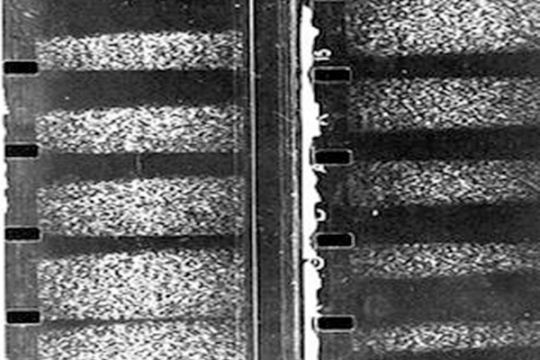625

Synopsis
625 operates with changing blurs of TV screen rasters, filmed off the TV set and negatively reproduced, and made up of 625 lines. The sound is derived from the light levels of the individual picture elements via a photoresistor."Shooting the television image with a Bolex 16mm camera produces the visible, thick black roll bar as a result of the difference in frames per second between analog video and film. With 625 the Heins simply thematize this product of the cinematic reproduction process by altering the speed with which they record an image of television static or snow. They thereby subject the roll bar to the vagaries of an imposed rhythm, the rhythm of their camera's shooting speed. As Hein's comments to Kren indicate, the film material itself 'has a wonderful graininess, a very lively surface,' one marked by the scratches and arbitrary alterations incurred as a result of the Heins' homemade method of developing the film strips in a bucket in their Cologne bathroom. By contrasting television static and the roll bar with film grain, 625, we can say, subjects the materiality of video to the materiality of film." – Marc Siegel, Reproducing W+B Hein's Material Films